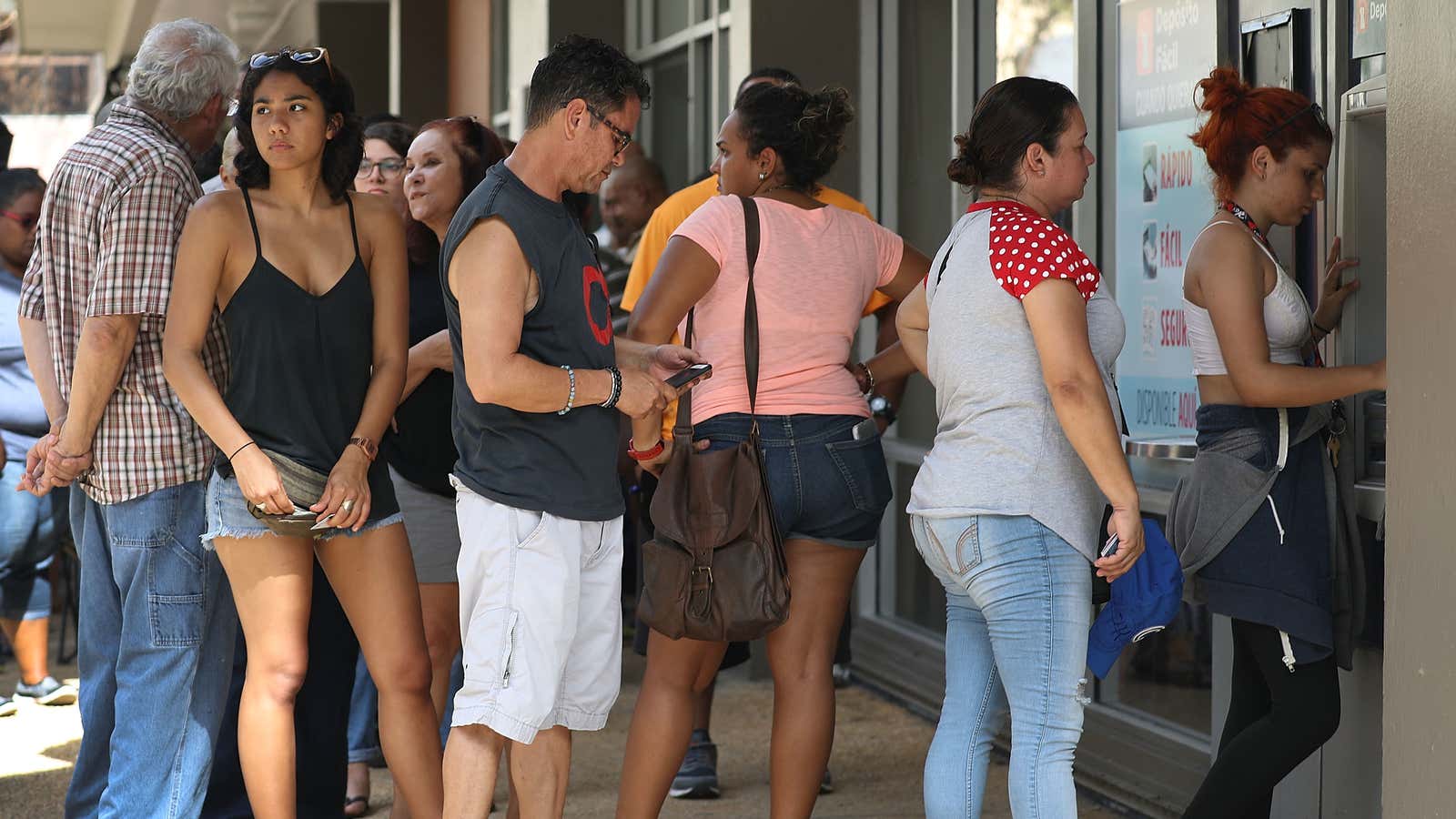When You Prepare for a Hurricane, Go to the ATM

You are blocking the windows. You are stocking up on water. You scoop up sandbags. But wait: do you have cash? If you’re preparing for a hurricane, tropical storm, or other weather event that requires significant notification, you should add visiting a bank or ATM to your to-do list.
After the storm, money is king. Businesses can reopen before electricity is restored, putting cash holders at the forefront of everything from gasoline and food to that ice cold beer you’ll so desperately want to open up when things start to go down.
Banks tend to leave ATM stations until a known weather threat occurs, while retailers offering cash back can sometimes reduce the amount of cash back they allow for a purchase. When Hurricane Sandy bypassed Washington, DC in 2012, one grocery store lowered its cash-back limit from $ 200 to $ 50.
After the storm swept through New York City, residents in areas without electricity had to walk to find working ATMs , and often found them dead. In the aftermath of a storm, it can be difficult for banks to determine which ATMs need to be recharged and in which areas electricity has been restored. Meanwhile, armored trucks can find it difficult to reach storm-hit areas that need resupply.
How much money should you have on hand in case a storm approaches? A few hundred dollars should provide a decent pillow. If the weather conditions are harsh and you think you might need to evacuate, it is better to have more cash. If you can do this, try to have enough money to cover your typical monthly expenses. If you can get bills of various kinds – a hundred, a pack of $ 20, about $ 10 and $ 5 – you will be better prepared for the situations in which you need to raise funds from this emergency fund.